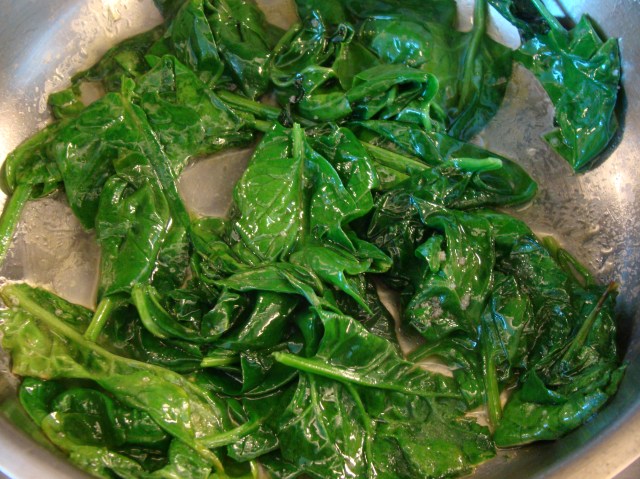Between late May and late October 2012, Jeremy Law, a graduate student in the Ecology, Evolution & Environmental Biology Department at Columbia University, conducted a study of arthropod diversity at Battery Rooftop Garden. Guests visiting during last summer noticed bowls and cups set into the ground, including fluorescent blue, yellow white “bee bowls,” a type of pan trap, and pitfall traps. Jeremy also used a funnel-shaped sweep net to capture creatures from the air and foliage.
white “bee bowls,” a type of pan trap, and pitfall traps. Jeremy also used a funnel-shaped sweep net to capture creatures from the air and foliage.
The results? I present, with Jeremy’s permission, an edited version of the conclusions from his scientific paper:
“Although green roofs are habitats with harsh microclimatic conditions in isolation from ground-level habitats, they also have great potential in providing novel habitat for a variety of species in the urban environment (Oberndorfer et al. 2007). The Battery Rooftop Garden can be considered extreme for its location on the 35th floor, which can estimated conservatively to be 117 m, which is remarkably close to the height of the world’s tallest tree, a coast redwood (Sequoia sempervirens) which stands at 115.54 m, according to Guinness World Records. Based on this fact, it would be safe to say that this green roof would not be a habitat typically encountered by most arthropods in nature.
Despite these extreme conditions, I identified 15 orders and at least 35 families of arthropods on this rooftop garden. Of the 15 arthropod orders identified on the roof, 11 were from the class Insecta, which is quite impressive considering that there are only 41 insect orders in existence, according to the Tree of Life Web Project (Maddison andSchulz 2007). Although similar observational studies have been conducted on green roofs, no studies to date have been conducted on a green roof constructed on such a tall building (Brenneisen 2006, Kadas 2006, MacIvor and Lundholm 2011, Tonietto et al. 2011).
I included the relevant abundances, consumer category, and flight ability to provide a more accurate description of the arthropod community on this rooftop garden. Based on these categorizations, it appears that the spread of consumer category and flight ability were evenly spread among the different categories, with no particularly lowor high frequencies occurring. In particular, the even spread of the taxa among consumer categories may provide some insight into the health of the arthropod community. A previous study on trap-nesting bees and wasps and their natural enemies suggests that the presence of both prey species and their natural enemies act as a bioindicator for high habitat quality (Tscharntke et al. 1998). At the Battery RooftopGarden, the presence of aphids and thrips, both prey species, and spiders, braconid wasps, syrphid flies, and lady bugs, all likely predatory species of aphids and thrips, indicates that this green roof may indeed be providing valuable habitat for a vibrant functional arthropod community.
Surprisingly, the Battery Rooftop Gardens included arthropods with both high and low (or no) flight ability. These flightless animals may have arrived via wind dispersal or simply hitched a ride in the substrate or on plants added to the garden (Gatehouse 1997). It should be noted, though, that two arthropod group that are highly abundant on ground level were completely absent from all collections. Ants (Family: Formicidae) and mites (Subclass: Acari), which are highly abundant throughout urban areas, were not found on the Battery Rooftop Garden (Heliovaara and Vaisanen 1993, McIntyre 2000). This may indeed be a result of the vertical distance from ground-level and the low flight ability of these arthropod groups, as a previous study found that thevast majority of ant species were more abundant at ground level than on green roofs (MacIvor and Lundholm 2011).
Despite the extreme conditions of the Battery Rooftop Garden, the arthropod community appears to be thriving. What could be the explanation for this wide diversity of arthropod taxa? The Battery Rooftop Garden is rather atypical in comparison to othergreen roofs in that the substrate used on this roof is both relatively deep and composed of soil used for gardening, while other green roofs use shallow substrate with low organic content. In a previous study on beetles found on green roofs in Basel, Switzerland, the authors found that high structural diversity in the substrate, as is the case in natural soils, contributed to a high species richness of beetles (Kaupp et al.2004). Additionally, the Battery Rooftop Garden has very high plant and floral diversity relative to the typical Sedum-covered green roofs. In previous studies, dense vegetation and high floral diversity contributed to increased diversity in beetles, bees and hoverflies, potentially offsetting the physical isolation and adverse microclimatic conditions of arooftop (Kaupp et al. 2004, Frund et al. 2010, Mayer et al. 2012).
In this study, I sampled the arthropod diversity of the Battery Rooftop Garden and found a tremendous diversity of fauna. This study was an initial snapshot of the biodiversity of this already complex mini ecosystem. Arthropod communities are fast changing, and what was present in the habitat for a given year may not be present in thenext. Likewise, there will surely be new arthropod groups and species that will colonize the Battery Rooftop Garden each year. There is evidence that as these green roof habitats age, the number of arthropod species will increase, although future studies need to be conducted to confirm this phenomenon (Kaupp et al. 2004). In summary, the results of this study show that the Battery Rooftop Garden is a unique system that, in its young age, already provides habitat for a vibrant and changing arthropod community.”
So who are these arthropods? Of particular interest to my fruit trees, berries and vegetables are the great pollinators of the Hymenoptera order, which includes Bees and Wasps.
This handsome fellow is the Western Honey Bee (Apis mellifera),
 Source: bugguide.net (metrioptera)
Source: bugguide.net (metrioptera)
not to be confused with his cousin, the Common Eastern Bumblebee (Bombus impatiens), which is able to thrive in a wide variety of habitats and is a generalist nectar feeder:

Source: Flickr (Henryr10)
In subsequent posts, we will introduce you to some of the other arthropod residents of BRTG, including the Braconid Wasp, Hunter Fly and Hoverfly, and discuss their importance to urban agriculture and other evidence that more diverse plantings significantly improve the ecological value of green roofs, and the productivity of urban agriculture.

















































